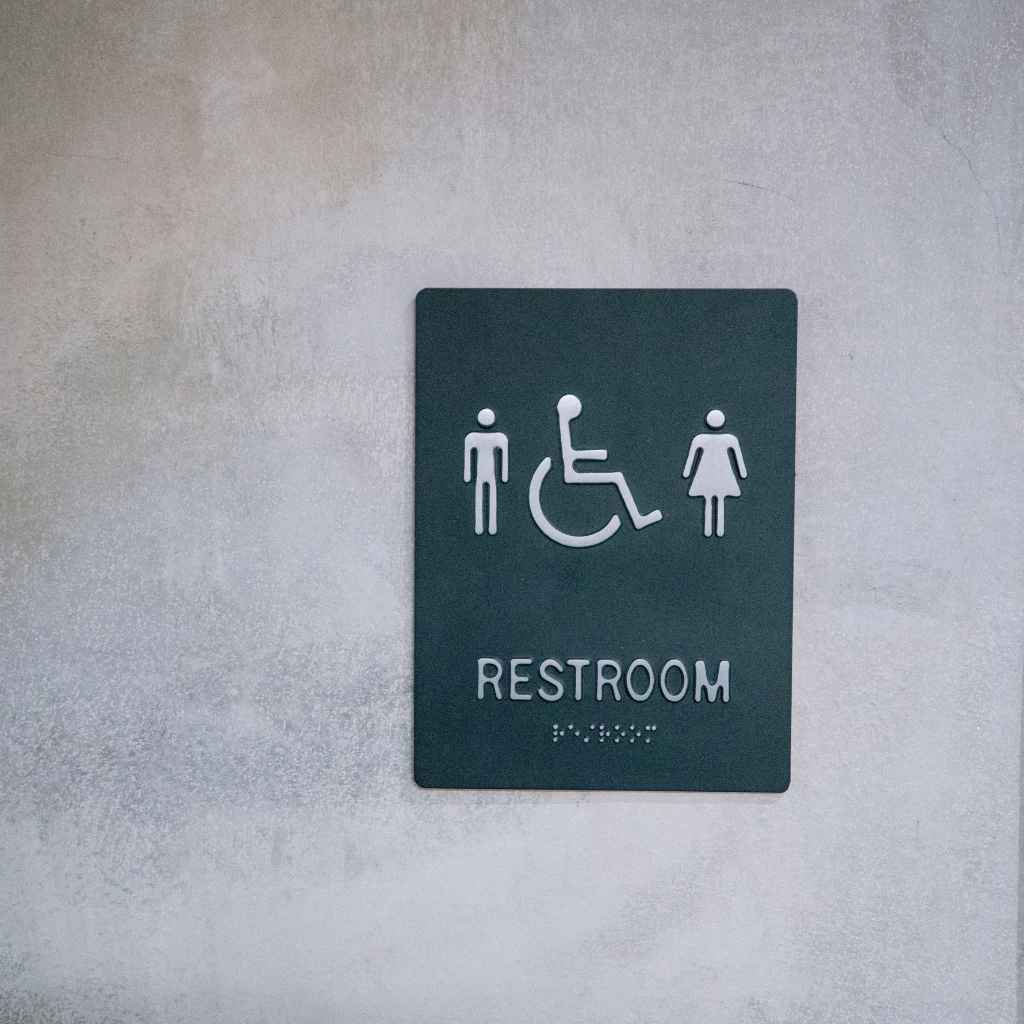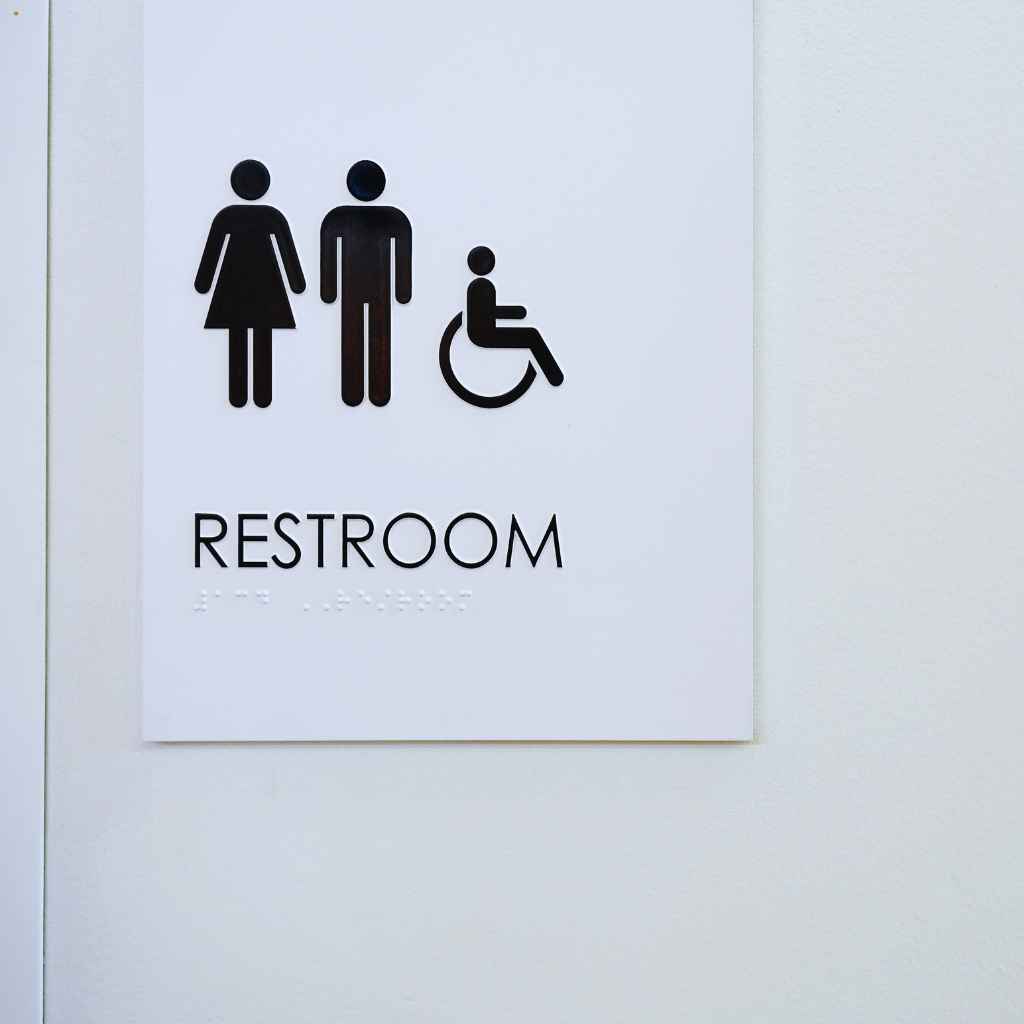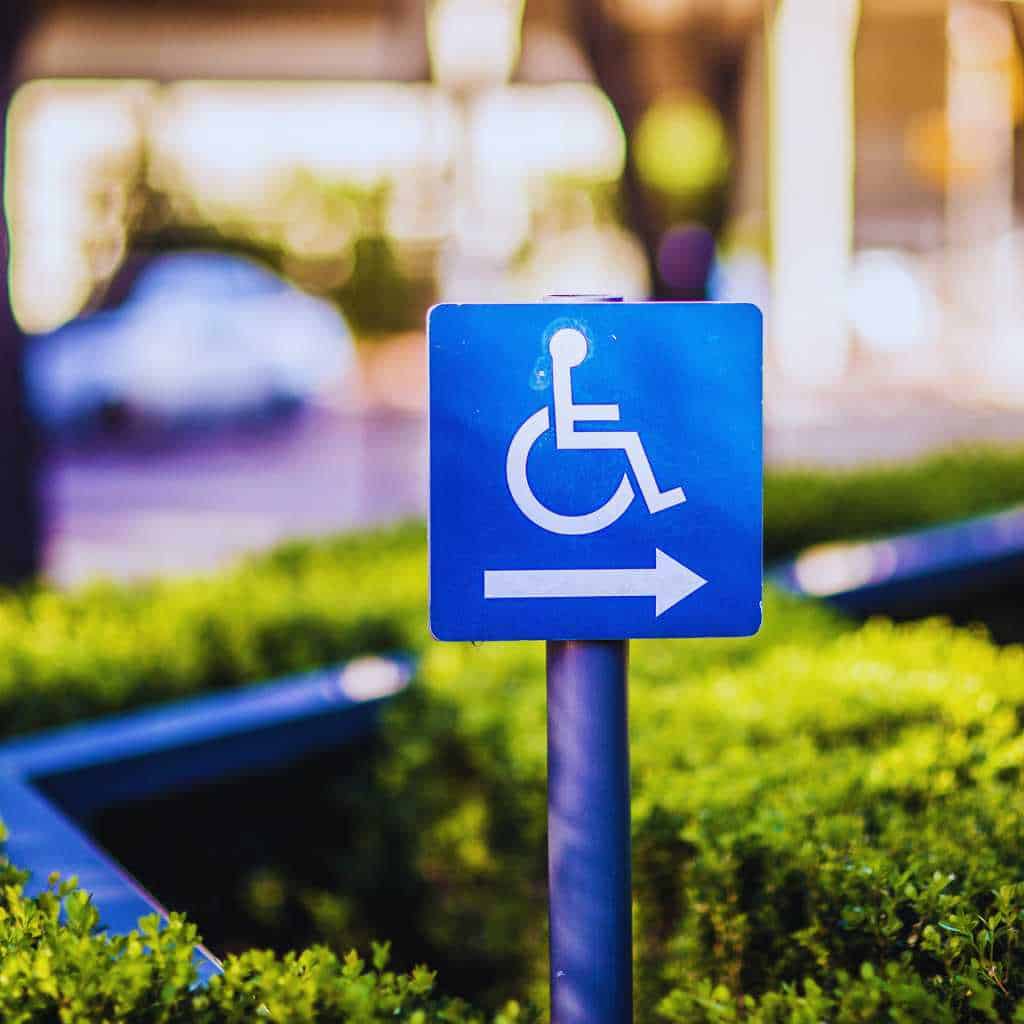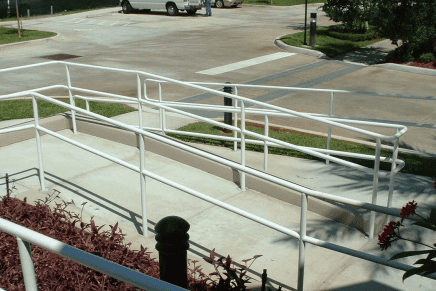California Government Facility ADA Checklist: Avoid Fines & Get Fully Compliant

- Updated on:
ADA compliance for government buildings in California is legally required under both federal and state law. If a facility doesn’t meet these standards, the consequences can be serious: lawsuits, funding issues, and community inaccessibility. Whether you’re managing a city hall, library, or DMV, this guide gives you a clear checklist to help meet requirements and avoid violations.
You’ll learn what standards apply, what areas inspectors focus on most, and when it’s time to bring in a Certified Access Specialist (CASp). If you’re responsible for any public facility in California, these are the steps to make it compliant and legally protected.
ADA Requirements for California Government Facilities
Let’s start with the essentials. If you’re short on time, here’s a quick rundown of the most important points:
Many facility managers assume ADA compliance is only a federal issue. In California, that’s a risky assumption. Title 24 adds stricter requirements that go beyond what federal rules demand. These points summarise what you’ll need to keep in mind:
ADA compliance is required under both federal and state law.
Title 24 standards in California are stricter than federal ADA rules.
Common issues include parking access, door hardware, and restrooms.
Certified Access Specialists (CASp) help identify and document compliance.
Barrier removal is mandatory when it’s considered “readily achievable.”
Which ADA Laws Apply to California Government Buildings?

Government facilities in California don’t follow just one accessibility rule. They’re accountable to several layers of regulation, and that’s where confusion usually starts.
Here’s what applies:
ADA Title II, covering state and local government services
California Title 24, Chapter 11B, which goes beyond federal ADA standards
Section 504 of the Rehabilitation Act, if federal funding is involved
Even if a facility checks all the federal boxes, it can still fall short under California’s version. Here’s why:
California requires lower door handle heights than the federal minimum.
Tactile signage and contrast requirements are more specific.
Reach ranges and turning radii are tighter, especially for mobility devices.
If you’re only using a federal ADA checklist, you’re probably missing gaps. Always cross-check with California Title 24 before planning upgrades, inspections, or renovations.
- Civil Rights: People with disabilities have the right to access the same services and facilities as everyone else.
- Legal Consequences: Failing to meet ADA requirements can result in fines and lawsuits.
- Community Inclusivity: Providing accessible services fosters a sense of belonging for all citizens.
ADA Compliance Checklist for California Government Facilities
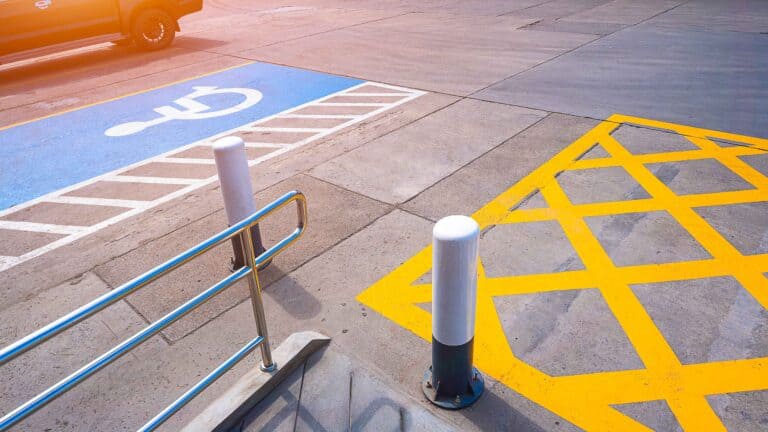
| Feature Category | Requirements |
|---|---|
| Parking and Outdoor Access | ADA spaces with proper signage, at least one van-accessible space, level path of travel to entrances, compliant curb ramps |
| Entryways and Doors | Lever-style handles, 32″ minimum clear width, thresholds under half an inch, at least one accessible public entrance |
| Interior Routes and Signage | Continuous unobstructed route of travel, accessible elevators, tactile and Braille signage where needed, minimum hallway widths |
| Public Restrooms | Grab bars, compliant sink height and clearance, accessible toilet placement, mirror and dispenser height at or below regulation |
| Service Counters and Areas | Accessible counters no higher than 36″, audio/visual aids in meeting rooms, clear knee and toe space at service areas |
Each of these elements must meet both federal ADA and California Title 24 standards to avoid penalties.
- Accessible Entrances And Exits: Installation of ramps, automatic doors, and elevators where necessary, with clear signage for accessible routes.
- Parking Facilities: Accessible parking spaces should be located close to entrances and must be clearly marked.
- Restrooms: Facilities must provide stalls wide enough for wheelchairs, grab bars, and accessible sinks and dispensers.
- Communication Devices: Install devices to aid communication for individuals with hearing or speech disabilities, such as TTY systems and assistive listening devices.
- Public Access Areas: Ensure that reception areas, waiting rooms, and meeting rooms are accessible.
- Emergency Egress: Provide accessible exit routes and emergency plans for individuals with disabilities.
Ensure full ADA compliance in your government facility by assessing areas for improvement.
Conduct an accessibility audit, engage with the community, and implement necessary changes to create an inclusive environment for all.
Where Most California Government Facilities Fail ADA Compliance
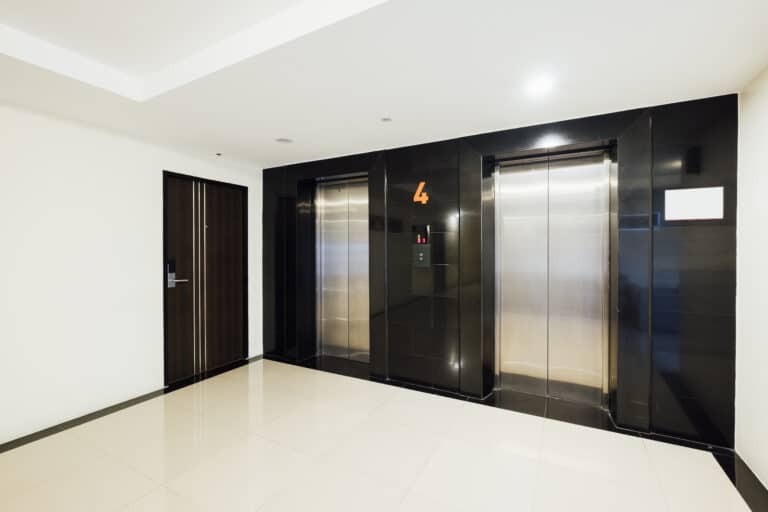
Even buildings that look recently updated often fall short. Let’s look at where the breakdown usually happens:
Van-accessible parking spaces may lack required signage or striping.
Door handles often require twisting instead of operating with a closed fist.
Countertops at public desks or kiosks are frequently too high.
Hallways and corridors might be blocked by furniture, file cabinets, or temporary signage.
Past renovations sometimes fail to include mandatory accessibility upgrades.
Each of these can trigger lawsuits or delay permits. A targeted CASp inspection helps fix these issues before they escalate.
PRO TIP!
Perform a thorough accessibility audit of your government facility and involve individuals with disabilities to identify compliance gaps and ensure effective improvements.

Emily Johnson
Certified Access Specialist (CASp) Inspector
Why Title 24 Compliance Is Essential for California Government Facilities
If your facility’s goal is to be genuinely compliant—not just on paper—then Title 24, Chapter 11B is your north star.
A professional CASp inspection report will include:
A list of current deficiencies against California code
A breakdown of what’s readily achievable to fix
Documentation that shows good-faith effort and planning
This can reduce your legal liability, especially if you receive a complaint or are applying for government grants.
Case Studies: Successful ADA Compliance in California

1. Los Angeles City Hall Renovation
The renovation of Los Angeles City Hall included significant updates to ensure ADA compliance.
- Improvements: Key features added included accessible entrances, upgraded elevators, and redesigned restrooms.
- Impact: These changes improved access for all citizens, facilitating participation in government services.
2. San Diego County Administration Center
The renovation of the San Diego County Administration Center focused on enhancing accessibility in a historic building.
- Improvements: New elevators, ramps, and retrofitted restrooms were implemented to meet ADA standards.
- Impact: This project reinforced the county’s commitment to inclusivity, ensuring that all residents can access essential services.
When to Schedule a CASp Inspection for a Government Facility
Timing matters. Here’s when it’s worth bringing in a CASp:
Before construction or renovation projects begin – Catching issues early avoids costly rework.
When preparing a grant application – Many government funding programs require documented accessibility compliance.
After a complaint or legal notice – A prompt inspection can help show good-faith efforts to comply.
During routine capital planning – Build accessibility into regular facility assessments and safety reviews.
Planning proactively keeps you out of legal trouble and improves public access.
What Happens If a Government Building Doesn’t Meet ADA Rules?

If your building was built before 1992, chances are it’s noncompliant by today’s standards. That’s not a legal death sentence—but it does mean action is required.
Here’s how to respond:
Create a written barrier removal plan and make it accessible to staff and the public.
Prioritize key areas like entrances, restrooms, and public service counters.
Use staff and budget strategically to target fixes that are readily achievable.
Include ADA and Title 24 compliance in ongoing training and maintenance plans.
These actions can also help meet state requirements under the Unruh Civil Rights Act, which strengthens protections for individuals with disabilities.
What to Do Next: Stay Compliant and Avoid Legal Trouble
Let’s sum it up for busy government teams and facility managers:
Keep an updated copy of California Title 24 regulations on file.
Book a CASp inspection for government buildings before making changes.
Publicly post your Schedule for Barrier Removal.
Assign a specific person to track and oversee compliance.
Repeat inspections after major changes or every few years.
That’s how to stay ahead of lawsuits, improve community access, and show your agency is doing the right thing.
Achieve full ADA compliance by assessing your government facility's accessibility features and identifying areas for improvement.
Contact us today to get compliant!
Frequently Asked Questions
What are the common challenges in achieving ADA compliance in government buildings?
Common challenges include updating older buildings, ensuring accessibility for all types of disabilities, and managing budget constraints.
Can government buildings receive funding for ADA compliance renovations?
Yes, funding can be obtained through federal grants, state programs, and specific allocations for ADA compliance improvements.
How often should government buildings be audited for ADA compliance?
Government buildings should be audited at least every three to five years or whenever significant renovations are planned.
What role do employees play in maintaining ADA compliance in government buildings?
Employees are crucial in maintaining compliance by being trained to understand accessibility requirements, reporting barriers, and following accessible practices.
How are ADA violations addressed in government buildings?
Violations are addressed through corrective actions, which may include modifications, training, and legal proceedings if necessary.

Written by Emily Johnson
Emily Johnson is a Certified Access Specialist (CASp) Inspector and is passionate about making spaces accessible for all. With over 10 years of experience and degrees in Civil Engineering and Architecture, she inspires others while championing ADA awareness.
RECENT POSTS
CATEGORIES
Get a free quote today!
By clicking “Submit”, you are signing up to receiving emails from us. You can unsubscribe whenever you like. SMS rates may apply.
Want To Know More About ADA Accessibility And How To Get Compliant?
Check out our blog!




